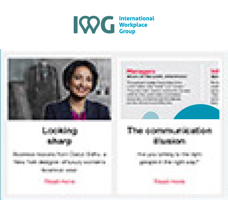Now that hybrid working is here to stay, there is a greater need than ever to transform offices into places people really want to spend time in.
In the hybrid working world, where employees won’t all be in the same place at any one time, the office will play a key role in enabling people to come together for collaboration and collective creativity. This means the design of offices will need to evolve to enhance relationship building and face-to-face communication, with employees using their time in these locations to network and collaborate with colleagues.
For landlords, this could mean an overhaul of existing premises to help them match up to new working expectations. Beige cubicle farms are no longer the order of the day. Instead, offices that act as social hubs, with bars, wellness spaces, expansive communal tables and residential-style lounges will stand out from the competition. Other desirable features could include biophilic indoor planting and video-conferencing suites to campfire zones and al fresco forums for team gatherings.
Fun will have an increasing part to play in the office experience as an aid to wellbeing and creativity – something the tech giants have long understood. Google, for one, is famous for its fun-based workspaces, featuring Lego zones, slides, bowling alleys and more.
“Amazon talks about ‘Easter eggs’,” says Doug Demers, Managing Principal at B+H Architects and the Centre for Advanced Strategy. “These are the unexpected things that happen as you move through a space that may inspire you or even disturb you, but essentially make things more interesting and help you to break out of a fixed way of thinking.”
He says that experience design offers a chance for companies to “fine-tune their real estate footprint to be more appropriate to the way employees are looking to work”. He adds: “The New York Times ran an article recently saying that employers had better figure out how to make some magic happen in the office space if they wanted people to come back and feel empowered and creative, and it’s true. People will be thinking, ‘Am I going to be able to be creative in this space?’”
The importance of these new features will be essential for savvy landlords wanting to capitalise on the long-term trend for hybrid working. Hubs for collaboration and productivity will reign in the new world of work, while their positioning within wider mixed-use developments will also be of great appeal, creating zones for living, working and socialising. This type of development is also paving the way for the 15-Minute City, an urban planning phenomenon that is taking the world by storm, where everything a person needs is within a 15-minute walk or cycle ride from their front door.
The rise of experience design is one of ten trends identified in IWG’s white paper, The Future of Work: a trends forecast for 2022.
Flexible workspace is the fastest-growing sector of the global workplace market. Make the most of this exciting investment opportunity by partnering with IWG today.






